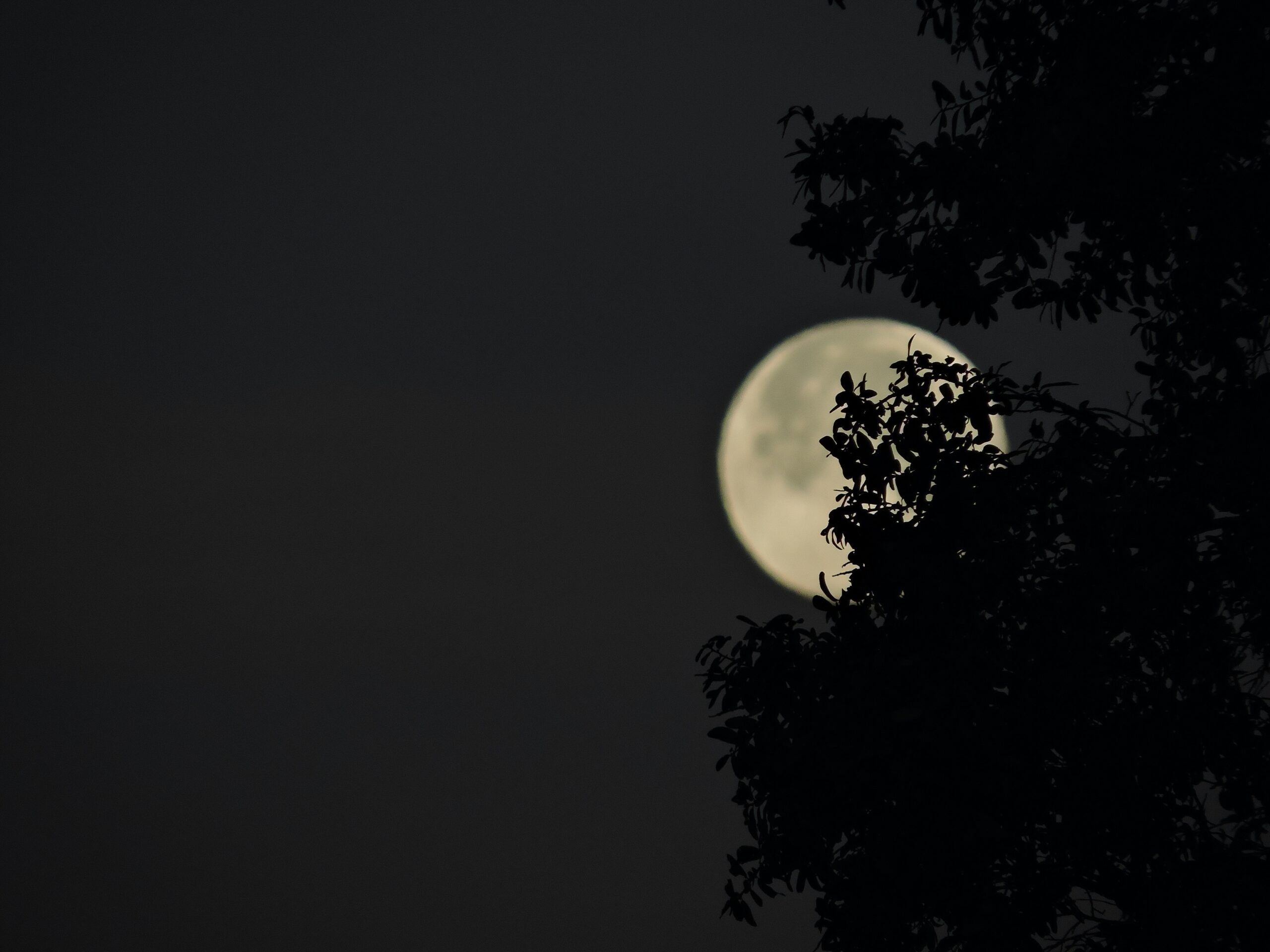
the mysterious realm of people being influenced by the moon
part 2 of our moon influence investigation series
Throughout history, the Moon has been given its fair share of proposed influence on the day-to-day lives of human beings. Dating all the way back to 400 B.C., we can find systems of belief centred around the Moon’s perceived ability to induce periods of temporary lunacy, impact sleep, alter people’s mood, and even regulate the cycle of menstruation (1).
In fact, you’d be hard pressed to find an arena of our behaviour that hasn’t once been attributed to the Moon, in some way or another. *Funnily enough, the words ‘lunacy’ and ‘lunatic’ actually originate from the Latin word ‘luna,’ for Moon, themselves.
According to some reports, full moons have been linked to:
- An uptick in crime and social deviance (2)
- An increase in the number of babies born (3)
- A greater number of car-crashes and animal bites (4)
- A decrease in the time needed to recover from cardiac surgery (5)
For the most part, however, we understand these links to be of a non-causal nature — in other words, they remain unproven by science. Time and time again, studies have failed to determine any concrete relationship between the aforementioned factors and the Moon... past mere coincidence, that is.
We know the Moon is responsible for commanding the coming and going of the tide, and there’s a vast amount of evidence to support the role it plays in navigation, migration, and reproduction for a variety of different animals — but affect the behaviour of human beings? The research says not so much.
So, from where did this talk of people being controlled by the full Moon come from? And how did this peculiar theory first arise?
theories on people and the influence of the moon
One idea surrounding its origins comes from a psychiatrist named Charles L. Raison and his colleagues at Emory University. Lunar theory, after all, is so widely pervasive across cultures that at some point, they suggest, it must have been somewhat rooted in truth.
Raison believes that prior to the advent of any kind of night-light, the intense glow of the full Moon may very well have stopped people from being able to sleep. Sleep disorders are closely linked with a variety of issues such as an increase in erratic behavior, anxiety, and even the risk of triggering mania in patients with bipolar disorder (6).
Such factors can go a long way in explaining some of the behaviours attributed to the moon (with an increase in anxiety perhaps able to account for the higher number of dog-bites, and trips to the E.R.)
Additional research has found a correlation between specific stages of the lunar cycle and the quality of human sleep. A study conducted in 2013 saw both subjective and objective changes in measures of participant’s sleep (i.e. how the sleep felt to them versus how it appeared within the data) in direct accordance with the presence of the full Moon (7).
The study was carried out under highly controlled conditions within a lab, and participants had no conscious perception of the time, nor the (then) current phase of the Moon. Variables such as exposure to light were also manipulated, but still, fascinatingly, the results stayed the same.
Further evidence suggests that prior to industrialization and the availability of artificial light, humans would have relied exclusively on moonlight and the varying phases of the mood to modulate their sleep, and stimulate nocturnal activity (8).
After all, if illuminating a room wasn’t as simple as flipping a switch, one might be inclined to rely on a particularly bright Moon as a prime excuse for getting a little bit of extra work done. You might have already guessed by our logo, but at sofi we’re big fans of the moon (and not altogether opposed to some late night work, too).
And while more research is necessary to truly understand the important relationship between people and the Moon, there’s increasing reason to believe that it might play a subtle but vital influencing role in our lives. By reconnecting with the ways we may have lived in the past, we just might be onto something worthwhile of examining in the present.
other moon related phenomenon
A phenomenon referred to as magnetoreception — aka the physical perception of the geomagnetic field — is well-established in the research regarding vertebrates and amphibians, but has yet to be fully understood when it comes to humans.
Here, some scientists assert that humans can detect tiny changes in the Earth’s magnetic field that are closely linked to the flow of the tide and the phases of the Moon. One study observed that a drop in alpha brain wave activity occurred following specific field rotations (9). And another proposed that somewhere between 10 and 20% of the total human population are thought to be sensitive to these subtle forces (10).
And humans are certainly not the only animals to be affected by the moon.
Did you know, for instance, that the body weight of a honeybee is shown to increase during a new Moon? Or that those tiny crustaceans (fittingly referred to as ‘sand-hoppers’) you can find jumping in the sand possess a compass within their antennae specifically for sensing the arrival of the moon in the sky above each night (11,12)?
It doesn’t seem altogether so strange, then, to think that a celestial body as big and powerful as the Moon, might just have an effect on humans (and their sleep) that we have yet to completely scientifically perceive.
Read part 1 of this series, The Mysterious Realm Of People Being Influenced By The Moon by clicking here, and click here to subscribe to sofi and reserve your smart pod from our limited first production run.
References:
- Coles EM, Cooke DJ. Lunacy the Relation of Lunar Phases to Mental III-Health. Canadian Psychiatric Association Journal. 1978;23(3):149-152.
- Thakur, C. P., & Sharma, D. (1984). Full moon and crime. British medical journal (Clinical research ed.), 289(6460), 1789–1791.
- Wake, R., Misugi, T., Shimada, K., & Yoshiyama, M. (2010). The effect of the gravitation of the moon on frequency of births. Environmental health insights, 4, 65–69.
- Bhattacharjee, C., Bradley, P., Smith, M., Scally, A. J., & Wilson, B. J. (2000). Do animals bite more during a full moon? Retrospective observational analysis. BMJ (Clinical research ed.), 321(7276), 1559–1561.
- Lifespan. (2013, July 15). Lunar cycle affects cardiac patients undergoing acute aortic dissection: Waning and full moon cycles impact length of stay, mortality. ScienceDaily
- Raison CL, Klein HM, Steckler M. The moon and madness reconsidered. J Affect Disord. 1999 Apr;53(1):99-106.
- Cajochen, Christian; Altanay-Ekici, Songül; Münch, Mirjam; Frey, Sylvia; Knoblauch, Vera; Wirz-Justice, Anna (2013). Current Biology. 23 (15): 1485–1488.
- Casiraghi L, Spiousas I, Dunster GP, McGlothlen K, Fernández-Duque E, Valeggia C, de la Iglesia HO. Moonstruck sleep: Synchronization of human sleep with the moon cycle under field conditions. Sci Adv. 2021 Jan 27;7(5):eabe0465.
- Wang, C. X., Hilburn, I. A., Wu, D. A., Mizuhara, Y., Cousté, C. P., Abrahams, J., Bernstein, S. E., Matani, A., Shimojo, S., & Kirschvink, J. L. (2019). Transduction of the Geomagnetic Field as Evidenced from alpha-Band Activity in the Human Brain. eNeuro, 6(2), ENEURO.0483-18.2019.
- Bevington M. Lunar biological effects and the magnetosphere. Pathophysiology. 2015 Dec;22(4):211-22.
- Zimecki, M (2006). Postepy Hig Med Dosw. 60: 1–7.
- Ugolini, A., Hoelters, L., Ciofini, A. et al. Evidence for discrete solar and lunar orientation mechanisms in the beach amphipod, Talitrus saltator Montagu (Crustacea, Amphipoda).Sci Rep 6, 35575 (2016).

